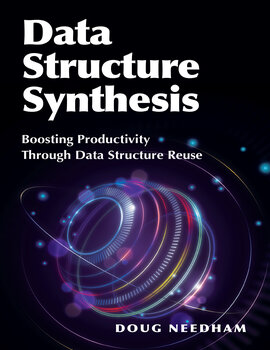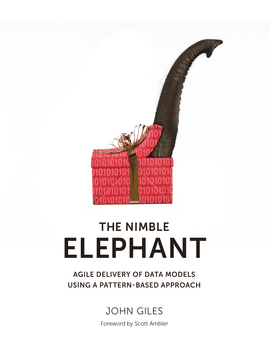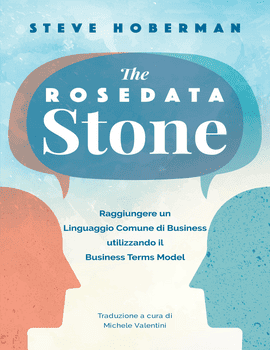Data Engineering
Data Engineering: A Novel Approach to Data Design, by Brian Shive
If you found a rusty old lamp on the beach, and upon touching it a genie appeared and granted you three wishes, what would you wish for? If you were wishing for a successful application development effort, most likely you would wish for accurate and robust data models, comprehensive data flow diagrams, and an acute understanding of human behavior.
Topics
Chapter 1: A Data Modeling Story
Value Chains and Data Models
Value Chain Analogies
Chapter 2: Value Chain and Data Model States
Designs for Airplanes
Value Chain Components
Data Model Components
The Burger Bun Conceptual Value Chain and Data Model
Chapter 3: The Value Chain for Designing and Building, Called Engineering
The Value Chain for House Designing
Level 1 – Defining the Scope
Level 2 – Designing the Owner’s View
Level 3 – Designing the Architect’s View
Level 4 – Designing the Builder’s View
Level 5 – Designing the Sub-Contractor’s View
Level 6 – Appreciating the Finished House
The Value Chain for Software Engineering
Level 1 – Defining the Scope
Level 2 – Designing the Owner’s View
Level 3 – Designing the Logical Information System Designer’s View
Level 4 – Designing the Physical Information System Designer’s View
Level 5 – Building the Developer’s and Tester’s View
Level 6 – Appreciating the Finished System
Models of the Real World
Chapter 4: Tabular Data Storage
Abstraction
Today’s Project: Badminton
Conceptual Data Model
Logical Data Model
Data Model Evolution
Over-Abstraction
Physical Data Models
Chapter 5: Data Model Components
Uniqueness Constraints
Relationships
Identifying vs. Non-identifying Relationships
One-to-Many Relationships
Many-to-Many Relationships
Recursive Relationships
Occam’s Razor for Relationship Design
Classification Hierarchies
One-to-One Peer to Peer Relationships
Modeling Time and Historical Events
Static Entities
Dynamic Historical Entities
Normalization
First Normal Form
Second Normal Form
Third Normal Form
Normalization of Intersections
Master Data, Transactional Data, and Measurement Data
Chapter 6: Luke’s Lemons, Inc. Business and Data Model
Season #1 Business Plan
Conceptual Value Chain Model
Conceptual Data Model
Logical Data Model
Physical Data Model
Season #2 Business Plan
Conceptual Value Chain Model
Conceptual Data Model
Logical Data Model
Physical Data Model
Season #3 Business Plan
Conceptual Value Chain Model
Conceptual Data Model
Logical Value Chain Model
Logical Data Model
Business Intelligence
Data Model for Data Modeling and Value Chain
Forward Engineering the To-Be Business and System
Reverse Engineering the As-Is Business and System
Fast Forward
Boy Scouts
Job Before College
Final Lesson
The wish for well-designed conceptual and logical data models means the requirements are well-understood and that the design has been built with flexibility and extensibility leading to high application agility and low maintenance costs. The wish for detailed data flow diagrams means a concrete understanding of the business’ value chain exists and is documented. The wish to understand how we think means excellent team dynamics while analyzing, designing, and building the application.
Why search the beaches for genie lamps when instead you can read this book? Learn the skills required for modeling, value chain analysis, and team dynamics by following the journey the author and son go through in establishing a profitable summer lemonade business. This business grew from season to season proportionately with his adoption of important engineering principles. All of the concepts and principles are explained in a novel format, so you will learn the important messages while enjoying the story that unfolds within these pages.
The story is about an old man who has spent his life designing data models and databases and his newly adopted son. Father and son have a 54 year age difference that produces a large generation gap. The father attempts to narrow the generation gap by having his nine-year-old son earn his entertainment money. The son must run a summer business that turns a lemon grove into profits so he can buy new computers and games. As the son struggles for profits, it becomes increasingly clear that dad’s career in information technology can provide critical leverage in achieving success in business. The failures and successes of the son’s business over the summers are a microcosm of the ups and downs of many enterprises as they struggle to manage information technology.
About Brian
Brian started his data modeling career in the late 1970s while working as a consultant to the relational database gurus at IBM. Brian learned from John Zachman at IBM how to use the discipline of engineering when designing data. Brian works at Microsoft where during his 18 years he has served as Microsoft Corporate Data Administrator, Enterprise Architecture Lead Information Architect, Principal Architect, Development Manager and most-fun-one Developer. He spent 16 years with Boeing IT. Brian also worked as Solar Energy Designer, Executive of Boy Scouts of America, musician, comedian and poet and janitor. Brian and his wife and two children live in the Seattle area. He teaches Aramaic in his Methodist church and can be seen on YouTube sounding at times like Jimi Hendrix. He is working on a book of poetry and loves teaching data modeling, database design and data integration. The human brain and the behavior it elicits have provided Brian with years of study in neurology, psychology, sociology and history.
Faculty may request complimentary digital desk copies
Please complete all fields.





